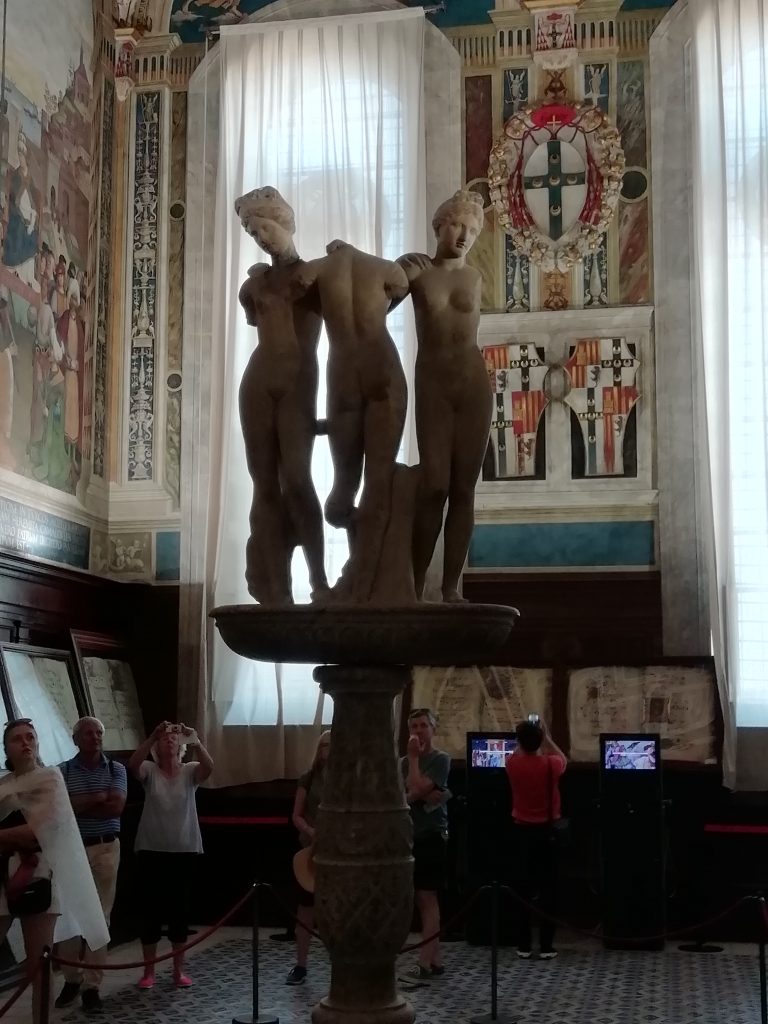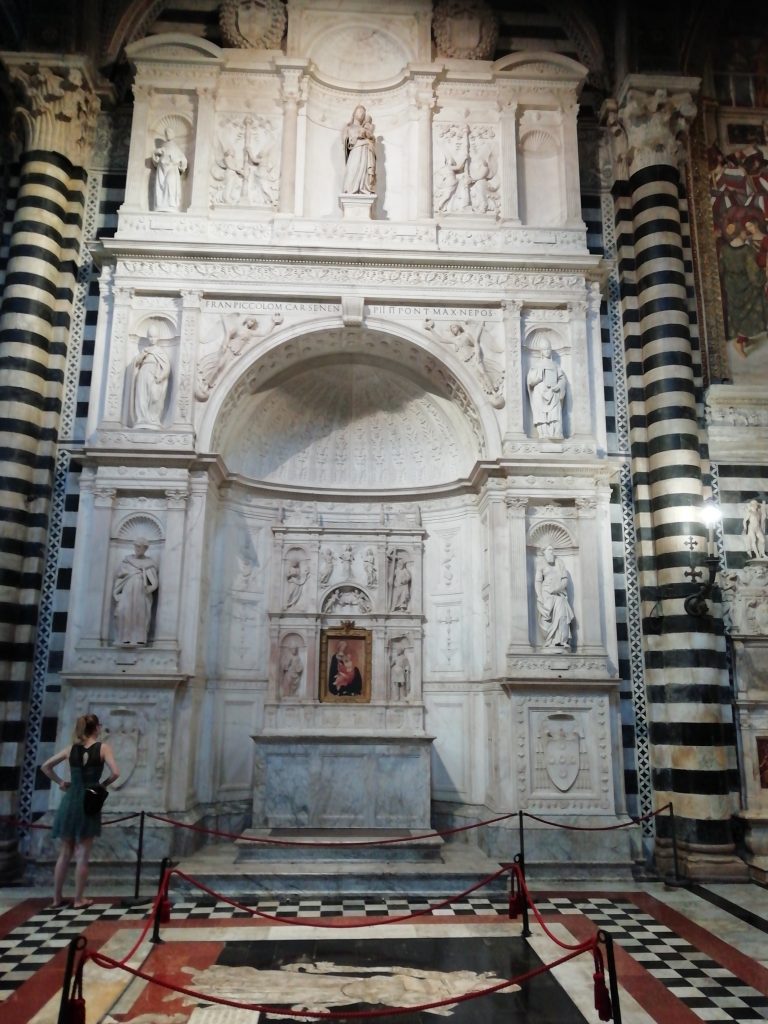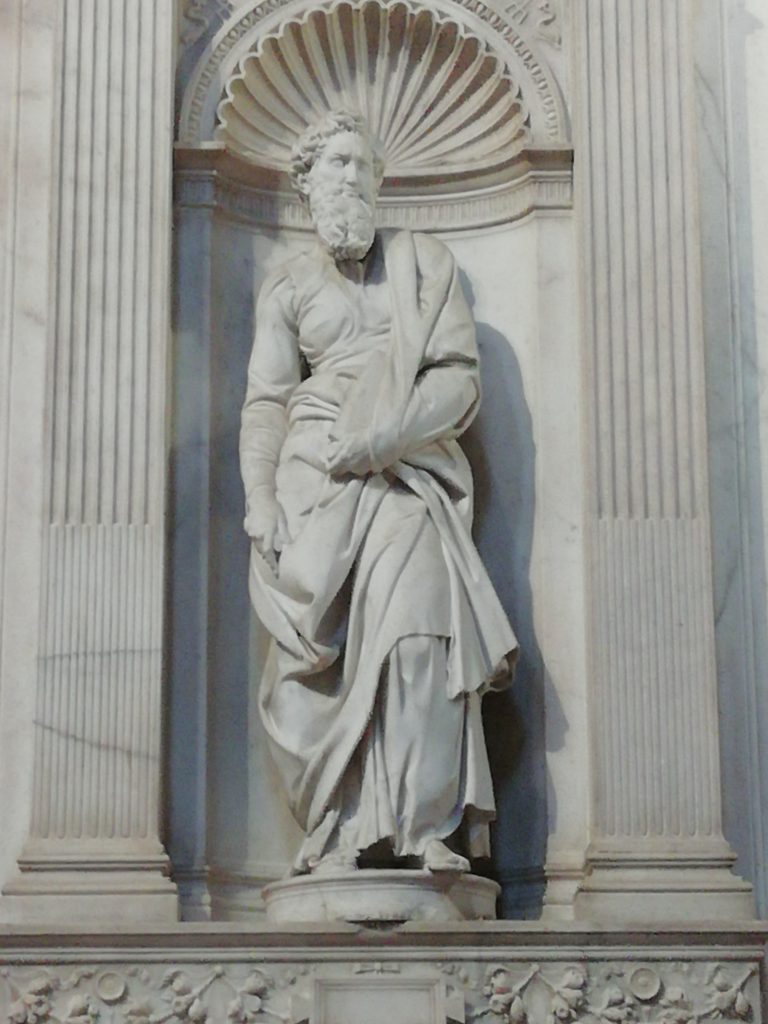
*Three Grace’s work is a 3rd century copy of Greek statue
Introduction: Michelangelo Buonarroti, one of the most influential artists of the Italian Renaissance, left an indelible mark on the world of art through his masterful works. While his sculptures and paintings at the Vatican and the Florence Cathedral are widely celebrated, his involvement at Siena Cathedral is often overshadowed. This essay explores Michelangelo’s contributions to Siena Cathedral, highlighting the convergence of his artistic brilliance and the cathedral’s architectural majesty.
Background on Siena Cathedral: Siena Cathedral, formally known as the Cathedral of Santa Maria Assunta, stands as a testament to Gothic architecture and medieval religious devotion. Situated in the heart of the city of Siena, Italy, the cathedral boasts intricate marble facades, soaring spires, and a breathtaking interior. Construction of the cathedral began in the 12th century, and it continues to be a cherished cultural and spiritual landmark.
Michelangelo’s Connection to Siena Cathedral: In the early 16th century, Michelangelo was commissioned by the Opera del Duomo of Siena, the governing body responsible for overseeing the cathedral’s construction and maintenance. Despite the fact that his involvement was limited compared to his other renowned projects, such as the Sistine Chapel, his contributions at Siena Cathedral left an indelible impression.

Introduction: Michelangelo Buonarroti, one of the most influential artists of the Italian Renaissance, left an indelible mark on the world of art through his masterful works. While his sculptures and paintings at the Vatican and the Florence Cathedral are widely celebrated, his involvement at Siena Cathedral is often overshadowed. This essay explores Michelangelo’s contributions to Siena Cathedral, highlighting the convergence of his artistic brilliance and the cathedral’s architectural majesty.
Background on Siena Cathedral: Siena Cathedral, formally known as the Cathedral of Santa Maria Assunta, stands as a testament to Gothic architecture and medieval religious devotion. Situated in the heart of the city of Siena, Italy, the cathedral boasts intricate marble facades, soaring spires, and a breathtaking interior. Construction of the cathedral began in the 12th century, and it continues to be a cherished cultural and spiritual landmark.
Michelangelo’s Connection to Siena Cathedral: In the early 16th century, Michelangelo was commissioned by the Opera del Duomo of Siena, the governing body responsible for overseeing the cathedral’s construction and maintenance. Despite the fact that his involvement was limited compared to his other renowned projects, such as the Sistine Chapel, his contributions at Siena Cathedral left an indelible impression.

Legacy and Influence: Michelangelo’s involvement at Siena Cathedral, though limited, left a lasting legacy. His contributions serve as a testament to his mastery of marble sculpture, his dedication to craftsmanship, and his ability to infuse spirituality and emotion into his works. Additionally, his unfinished projects offer glimpses into his creative process and continue to inspire contemporary artists.
Conclusion: Michelangelo’s influence on Siena Cathedral may be overshadowed by his more prominent works elsewhere, but his contributions remain significant. The Libreria Piccolomini and the statue of Saint Paul bear witness to his artistic genius and his ability to enhance the cathedral’s architectural splendor. While his unfinished projects may leave us longing for what might have been, they serve as a testament to the depth of his artistic vision.
